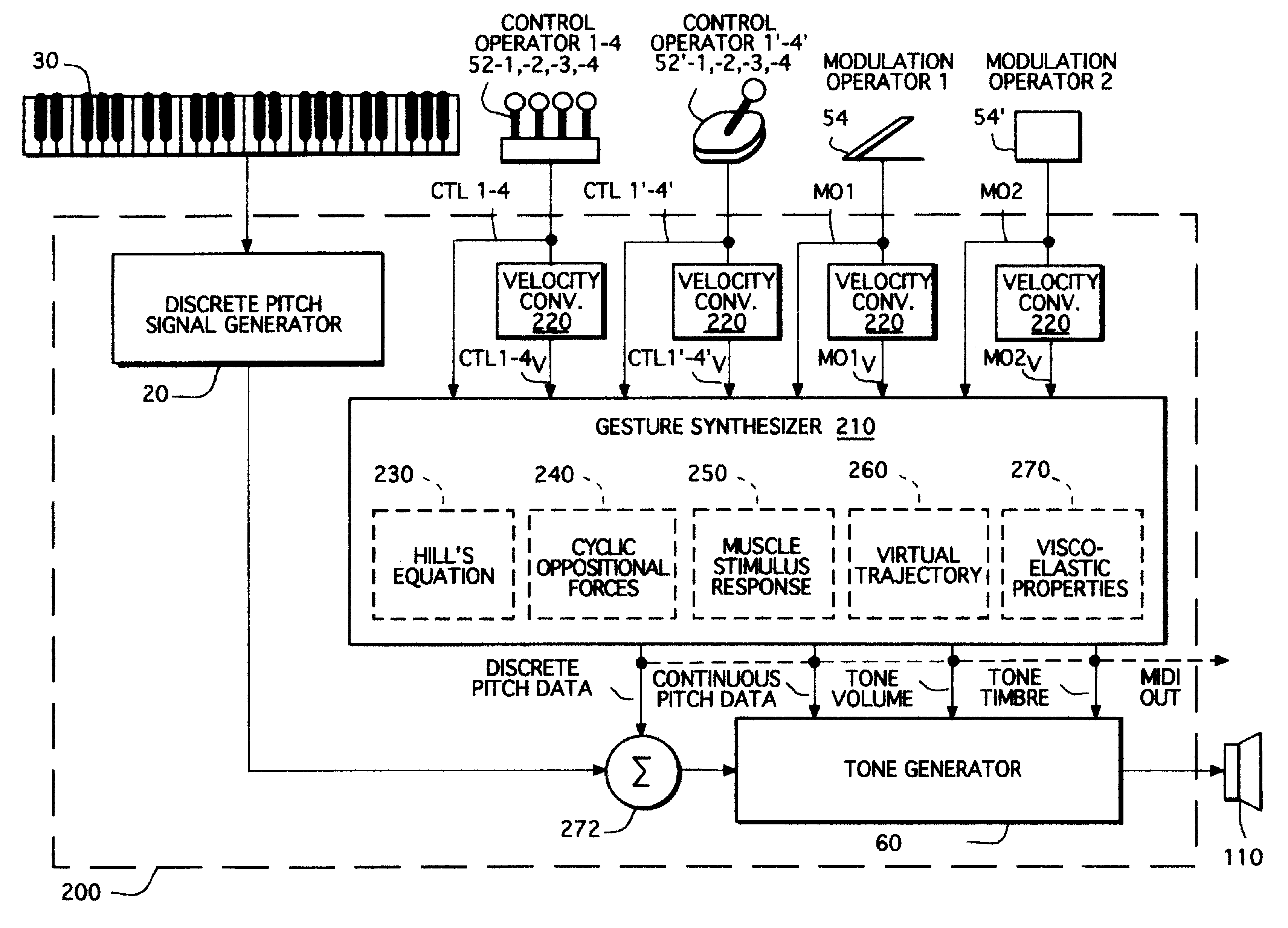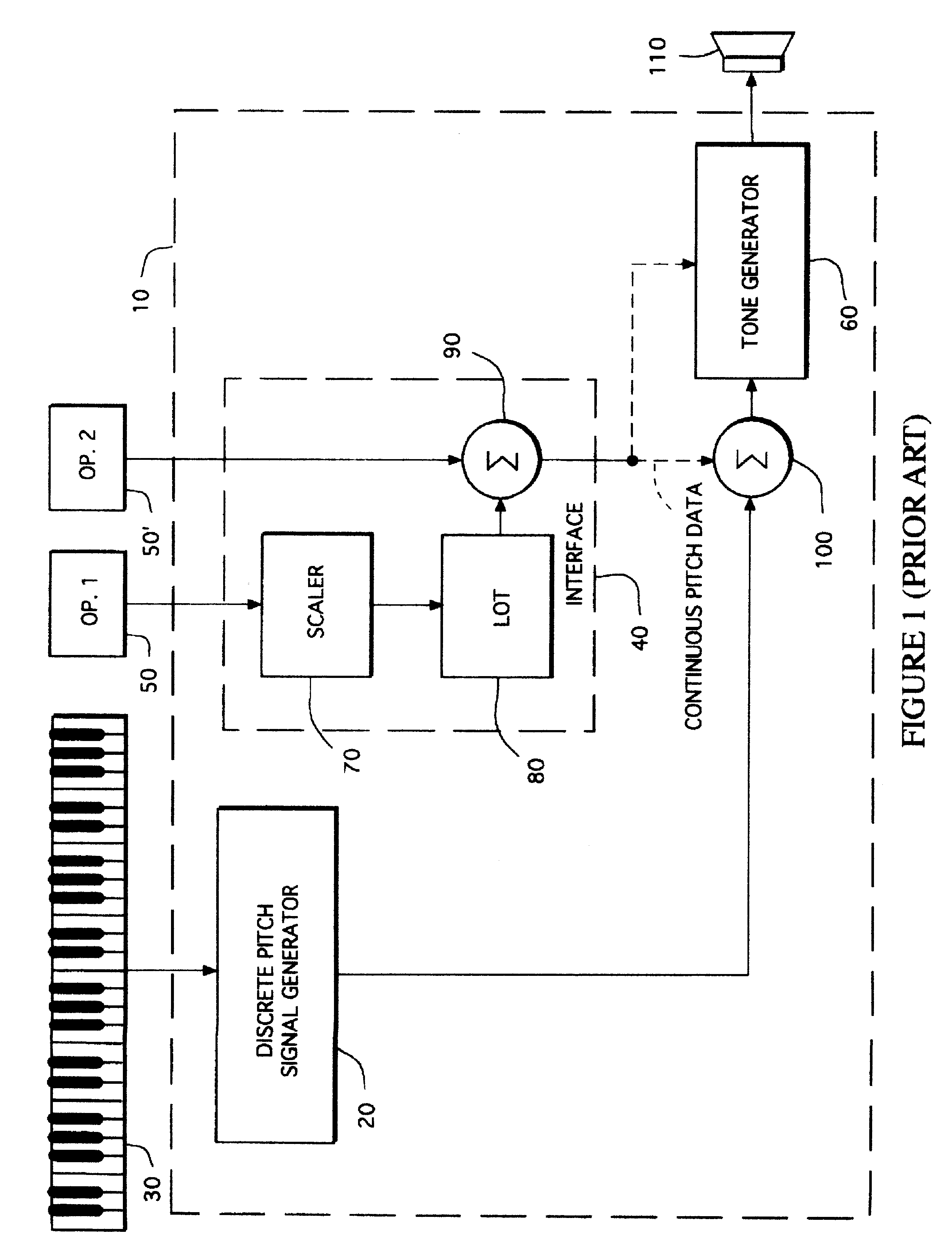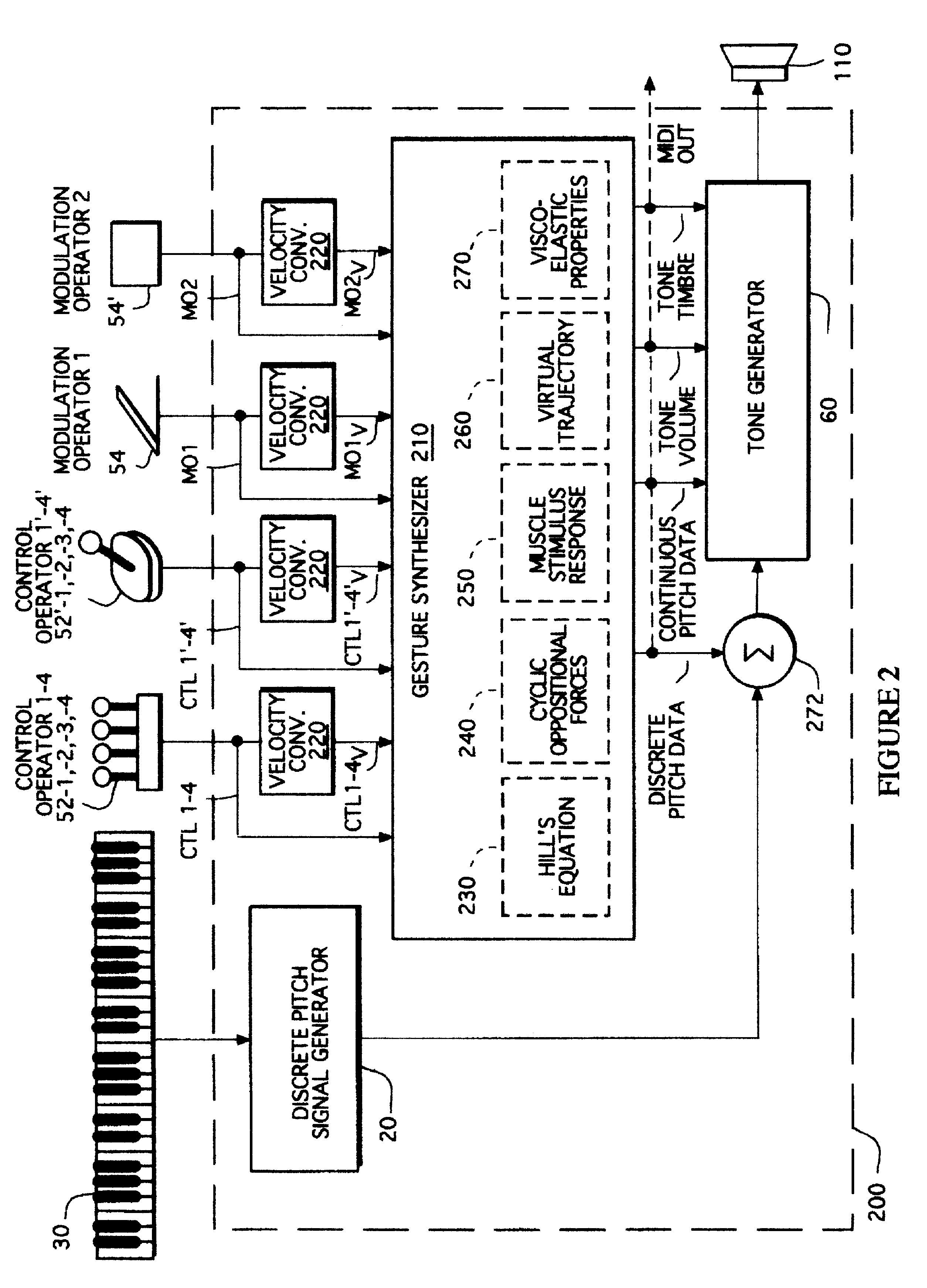Gesture synthesizer for electronic sound device
a synthesizer and electronic sound technology, applied in the direction of measuring devices, electrophonic musical instruments, instruments, etc., can solve the problems of not allowing combining gestures, affecting the effect of gestures, and producing significantly different effects, etc., to achieve the effect of modifying musical gestures
- Summary
- Abstract
- Description
- Claims
- Application Information
AI Technical Summary
Benefits of technology
Problems solved by technology
Method used
Image
Examples
Embodiment Construction
TABLE 1 contains various equations which may be used to implement the present invention, as depicted in the drawings and referred to in the following descriptions. Applicant has discovered that realistic .[.sound.]. .Iadd.sounding .Iaddend.gestures can be produced on an electronic synthesizer by including a gesture synthesizer. A gesture synthesizer according to the present invention synthesizes gestures using techniques including dynamic transfer functions, clock-generation, filtering, time delay and approaches that represent the cyclic opposing forces of muscles (which operate in pairs) against a resistive load (e.g., a guitar string under tension). Gestures so produced sound extremely realistic to trained musicians, are substantially more lifelike than what may be produced by prior art synthesizers, and are MIDI-compatible and MIDI-exportable.
The present invention permits user-selection of discrete pitches with one hand, using a keyboard or similar control device, and permits use...
PUM
 Login to View More
Login to View More Abstract
Description
Claims
Application Information
 Login to View More
Login to View More - R&D
- Intellectual Property
- Life Sciences
- Materials
- Tech Scout
- Unparalleled Data Quality
- Higher Quality Content
- 60% Fewer Hallucinations
Browse by: Latest US Patents, China's latest patents, Technical Efficacy Thesaurus, Application Domain, Technology Topic, Popular Technical Reports.
© 2025 PatSnap. All rights reserved.Legal|Privacy policy|Modern Slavery Act Transparency Statement|Sitemap|About US| Contact US: help@patsnap.com



